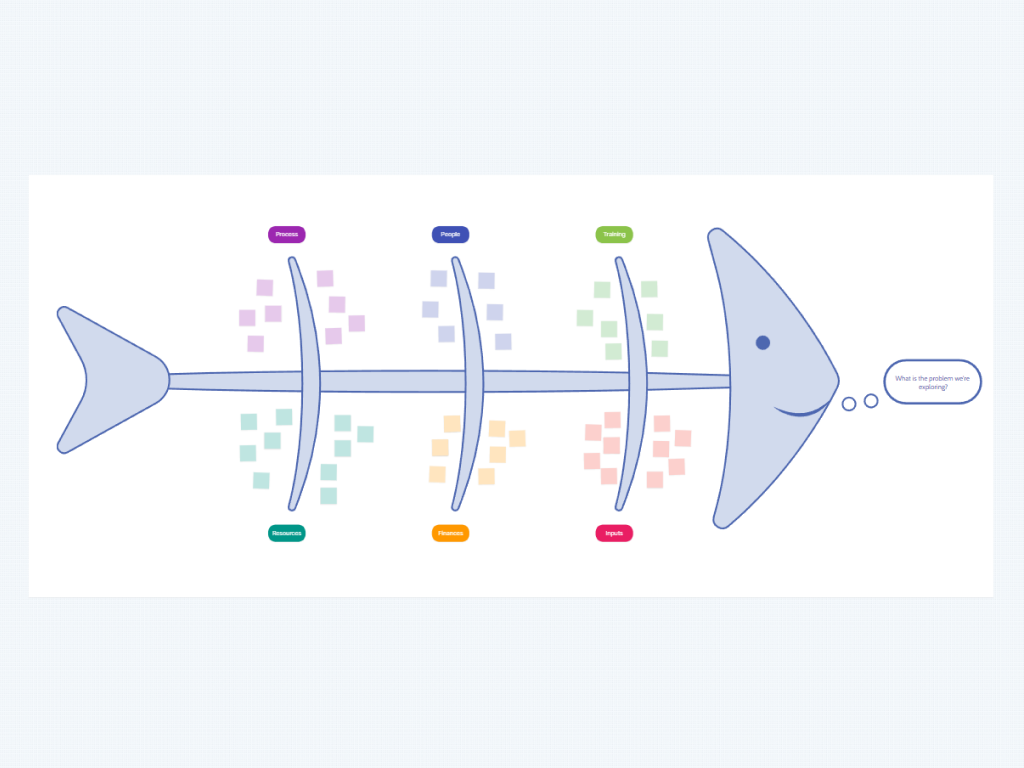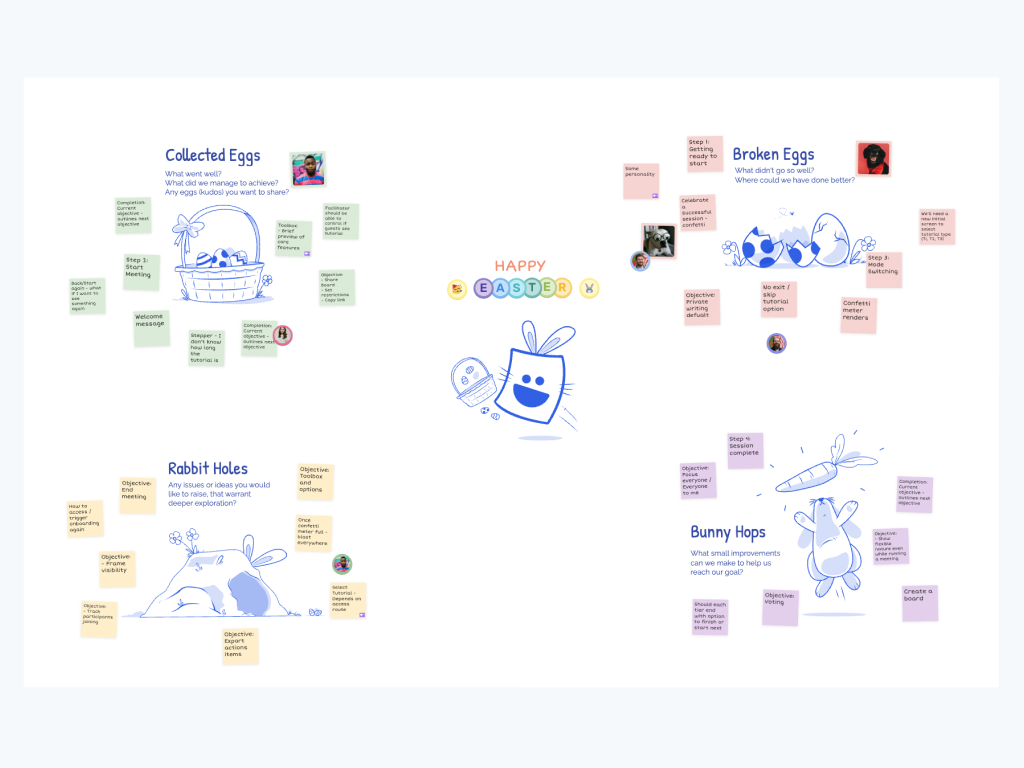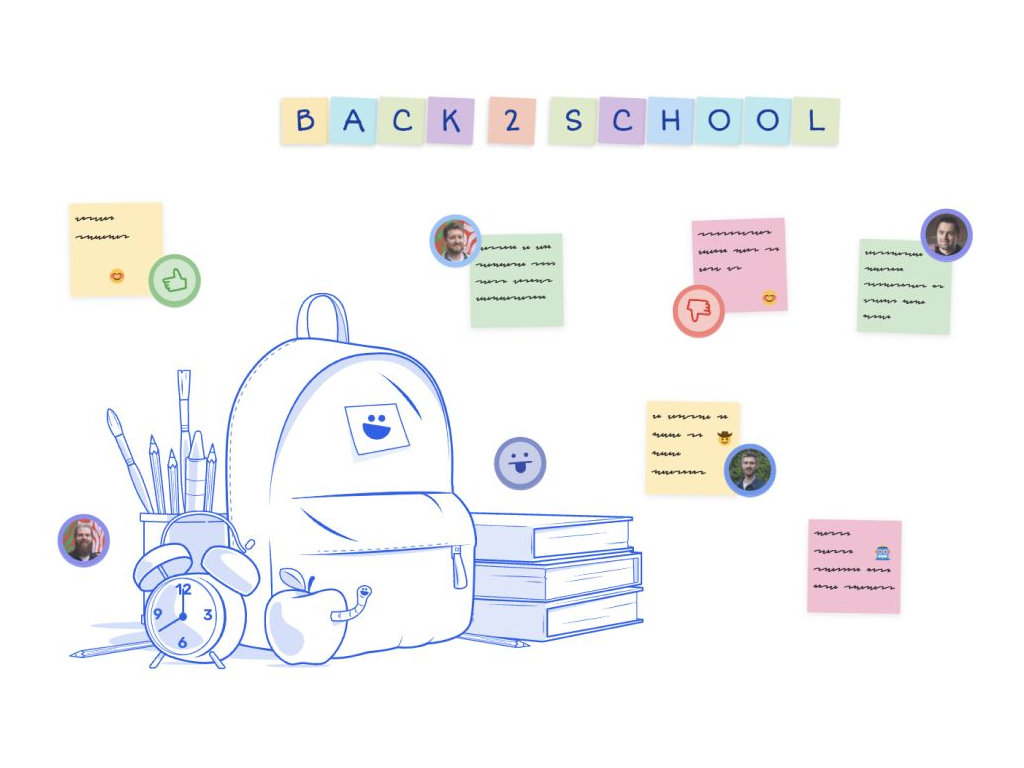What is the Ishikawa diagram exercise?
The Ishikawa (fishbone) exercise is used to explore cause and effect, most often when performing root cause analysis. It’s a great way to visually brainstorm all the factors that contribute to a problem, and is more structured than most other brainstorming activities. The causes are grouped into categories, which prompt thinking of alternative causes, and similar to the 5 Why’s exercise, the causes are explored for further contributing causes.
How to use the Ishikawa exercise
- Introduce the exercise to the team
- Write the problem statement at the head of the fish
- Write categories for the causes at the tip of the fish ribs, and prompt the team to add their points below them.
- As you progress through the exercise, new categories will emerge. Add these to the fish. You can copy / paste the fish ribs to extend the diagram.
- As causes are written, ask “Why does this happen?” and continue to add sub-levels to each category. Causes can be written in several places if they relate to several categories. Continue to ask “Why does this happen?” about each cause.
- As the causes and sub-causes build up, this will help you to identify and then address root causes to the problem, and will give you a place to start identifying areas to address.
Tips for using the Ishikawa exercise in Metro Retro
- Exercises exploring cause and effect can sometimes have some tension, with varying levels of comfort between participants. Use Metro Retro’s private sticky note writing to enable participants to write their points without fear or influencing each other. Participants can then reveal their sticky notes one-by-one when they choose to.
- Use the 5 Why’s technique to explore issues. Vary the question format to bring out different answers: “why did that happen?”, “how did that come to be?”, “what happened to cause that?”
- Use the topic tool to group similar themes together
- Use the voting tool to have the team prioritize the top 3 causes to address.



